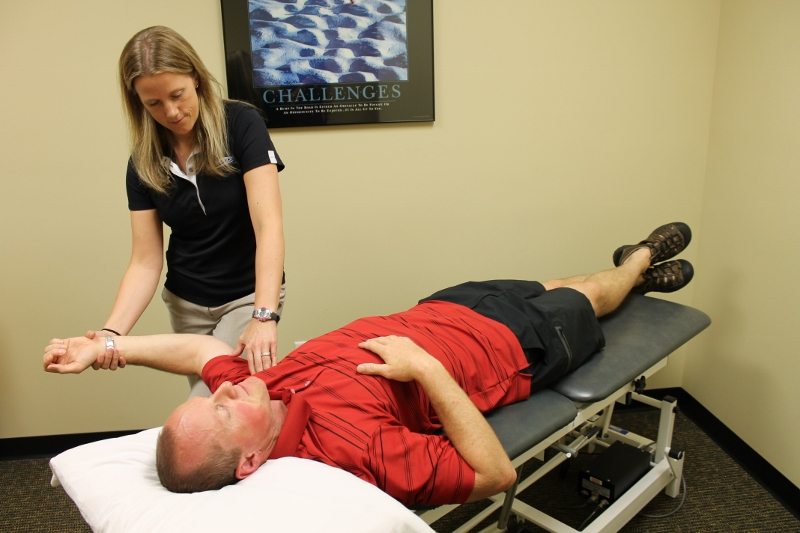Feeling knee, shoulder or neck pain? Why looking at the whole body is key to long term pain relief

Why do 90% of our patients recommend Performance Therapies to their family and friends? One of the reasons is our commitment to treating each patient as an individual and whole person. If you come in with complaints of a painful knee you will not get a cookie cutter knee assessment and treatment. You can expect a comprehensive examination of total body strength, range of motion, posture and positioning. Over the course of treatment your physical therapist will also likely assess things such as your balance, gait, core strength, shoe quality and movement patterns. We focus on functional movement patterns that everyone performs daily such as sit to stand, bending and stairs. For athletes we also assess form with jumping and running and lunging. We will blend our advanced training and knowledge with your specific goals to create a treatment plan that will get you the results you are looking for.
Why do we examine and treat the whole body when the pain is only in the knee? Because problems in one part of the body can cause pain in another. The more information we collect the more accurately we can diagnose the injury itself as well as why the pain started in the first place. Common causes of knee pain are often not located in the actual knee itself. I’ve seen weak hips, tight ankles and poor movement patterns all be a source or cause of knee pain. Even with obvious local knee issues such as a torn ACL or osteoarthritis there are usually factors elsewhere in the body that contributed to the onset of the injury. We can easily find the location of pain at the knee and treat it to reduce pain but if we don’t assess the whole body to find the cause of the pain and address it then the pain is likely to return. I’m using the knee as as example but the same goes for any area of the body. Often neck pain is found to be related to poor posture. As we treat lower into the thoracic spine to improve posture we may find that the root of the problem is the core muscles in the lumbar spine area not activating. I’ve seen lack of big toe flexibility play a part in the development of a calf strain. I’ve seen hip pain become chronic due to asymmetrical use of the legs with standing and walking.
The Performance Therapies Difference
These are types of things the physical therapists at Performance Therapies are trained to find and address. We are movement specialists which means we understand how the body should move as a whole in its most efficient state. We understand how the knees and feet and lower back should be positioned when a person bends to pick up a laundry basket or perform a clean and jerk in the weight room. We know how the shoulder blade should move as the arm raises overhead to reach a cup off a high shelf or throw a fastball. We know what normal movement looks like so we are able to determine when movement is abnormal and then what to work on to improve it. These details aren’t often discovered at the first visit. I find that I gain most of this information in all of the visits after the evaluation as I’m watching the patient move and listening to the stories they may not have thought to tell me at the first visit. At Performance Therapies you are guaranteed this consistent one-on-one time with your physical therapist because we do not employ PT assistants or aides. You will see a physical therapist at each visit. This consistency is what allows us to build a whole body treatment plan that will allow you to recover from your injury and get back to living your life the way you want to.